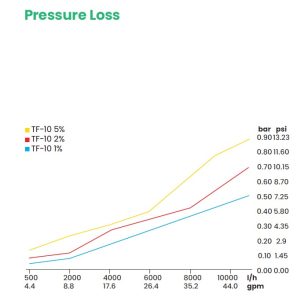Q&A from Tefen’s webinar
Q&A from Tefen’s webinar on the subject “Dosing of fertilizers and agrochemicals in seedling production”
Q: How important is it that all seedling planting and greenhouse personnel comply with Good Agricultural Practice rules, such as the restriction of jewelry (including watches), for phytosanitary reasons?
A: Compliance with these rules is mandatory for safety reasons and non-negotiable. A company that seeks to maintain Quality and Good Agricultural Practices must enforce them rigorously.
Q: Are the dosage degrees (e.g., 2%, 5%, 10%) controlled by a single sleeve, or is each degree controlled by a separate sleeve? If they are independent sleeves, do they come with the equipment set, or are they purchased separately?
A: Each pump has a threaded stem with a lock at the bottom. By removing the lock, you can calibrate the dosage to the desired percentage using a scale on the threaded stem. This allows you to adjust the MixRite to the specific dosage you want to apply.
Q: What is the dosage range of the MixRite dosing pumps?
A: Each piece of equipment and model comes with a specific dosage range to ensure precise application. For example, a Model TF 10 offers three percentage scales: 0.1%-1%, 0.2%-2%, and 1%-5%. This model provides different ranges to meet your dosage needs.
Q: As a comment, you must always consider the compatibility of fertilizers and the quality of the water when injecting.
A: Definitely yes
Q: Are dosing pumps used for landscaping?
A: Yes, there is an increasing demand for dosing pumps in gardening and landscaping applications to better control the colors and overall wellbeing of the plants.
Q: Does the relative humidity depend on the plant’s stage of development, and is higher relative humidity needed during the initial stage?
A: Yes, higher relative humidity is needed during the initial stage of development. The main reason for this is to prevent fungal and bacterial diseases.
Q: What is the best time or season to dose fertilizers in pitahaya?
A: Annex Intagri recommendations:
In the early stages of growth, the application of fertilizers with a higher nitrogen content is recommended, in such a way as to stimulate the development of the roots and the vegetative growth of the plant. In the second year, pitahaya plants generally begin growing, so it is suggested to apply fertilizers with similar levels of N-K-P per plant and increase the supply of K. It has been determined that plants have a better response to N and K than to P, and that K is the element most required in the greatest quantity during growth. The greatest number of nutrients will be required at flowering and fruits stages; it is recommended to apply formulas with a higher content of K at these stages. The application of foliar products rich in potassium will increase the quality of the fruits.
Extracted from https://www.intagri.com/articulos/nutricion-vegetal/fertilizacion-del-cultivo-de-pitahaya – This information is the intellectual property of INTAGRI S.C., Intagri reserves the right to publish and reproduce it in whole or in part
Q: Should the EC (conductivity) of the substrate be equal to or greater than that of the soil where it will be transplanted?
A: The conductivity of the soil to be planted must be less than the conductivity of the seedling’s root ball.
Q: When using a high flow rate, can the dosage be altered?
A: The percentage of product to be dosed remains constant and does not vary with changes in pressure.
Q: How does pressure loss influence dosage?
A: The MixRite requires less differential pressure than the Venturi. In a high flow, it is recommended to install the pump in a Bypass configuration to create the necessary differential pressure for MixRite operation. This differential pressure in the main irrigation head is minimal.
Q: You talk about seedling production. If it is transferred to Open Field, does the accuracy of the dosing pump prevail?
A: In open field applications, the accuracy of the dosing pump is not altered. It is recommended to increase the dosage percentage because you will be applying more fertilizer or agrochemical than in the seedling greenhouse.
Q: What is the pressure loss as a function of the flow rate that passes through the pump?
A.- This is the Pressure Loss curve of the MixRite TF-10

Q: Can a MixRite for agrochemicals accept chlorine to wash irrigation equipment?
A: The MixRite for agrochemicals and fertilizers can handle all types of liquids that are not highly corrosive, as it has NBR sealing materials and springs made from SST and Hastelloy. For chlorine applications, it is recommended to use a compatible MixRite with Viton sealing material and a Hastelloy spring. On farms, it is common to install a high dosing capacity MixRite for fertilizing and another MixRite with a lower dosing capacity for chlorine to be used for washing.
Q: Is it better to inject into the main Irrigation Head or into the zone irrigation head?
A: Dosing can be done in both the main irrigation head and the zones. However, if small doses or specific agrochemicals or fertilizers are to be applied, it is preferable to do so in the zone crossings. It is important to consider the degree of dilution and the flow time in the pipeline between the main irrigation head and the irrigation zone.